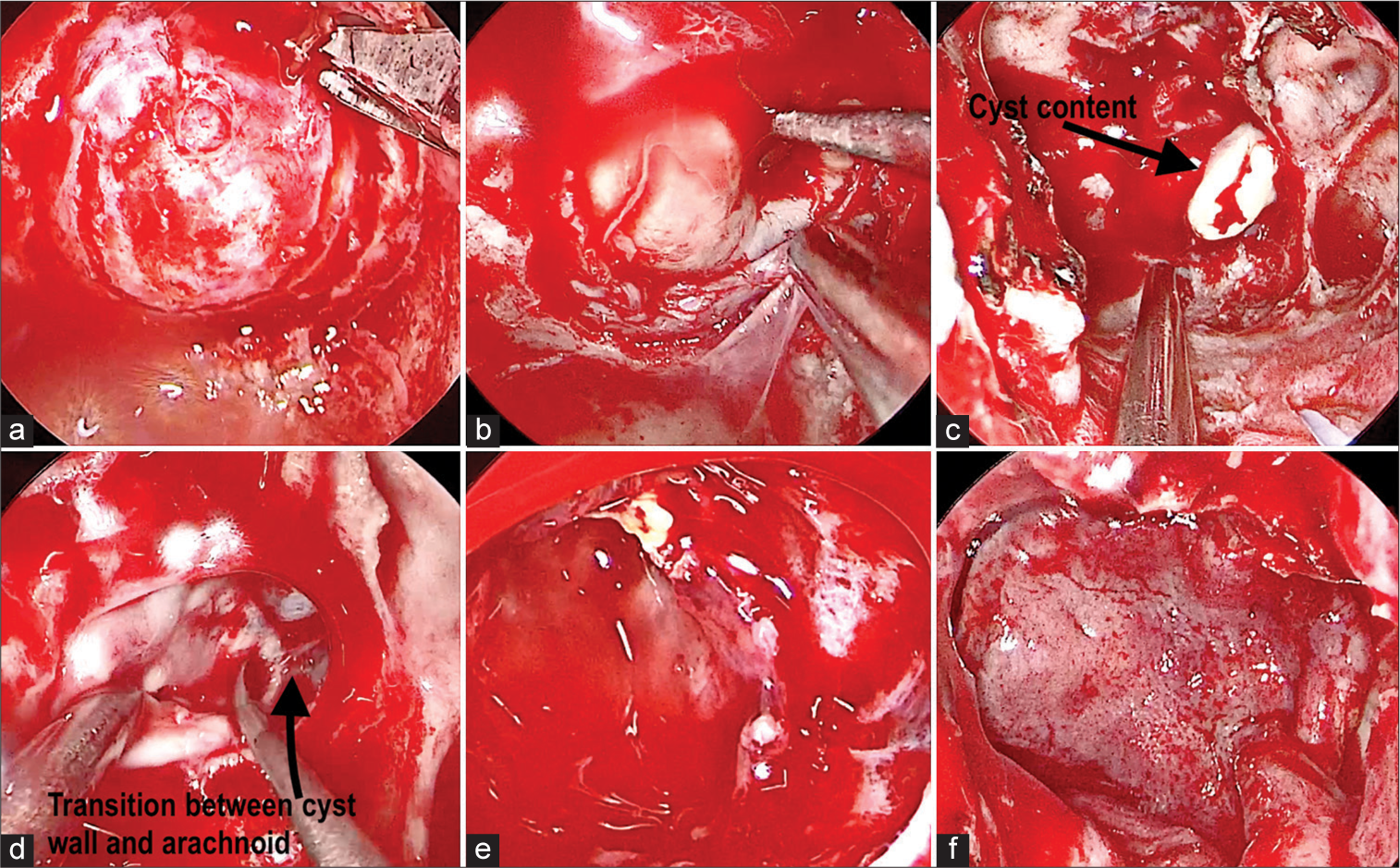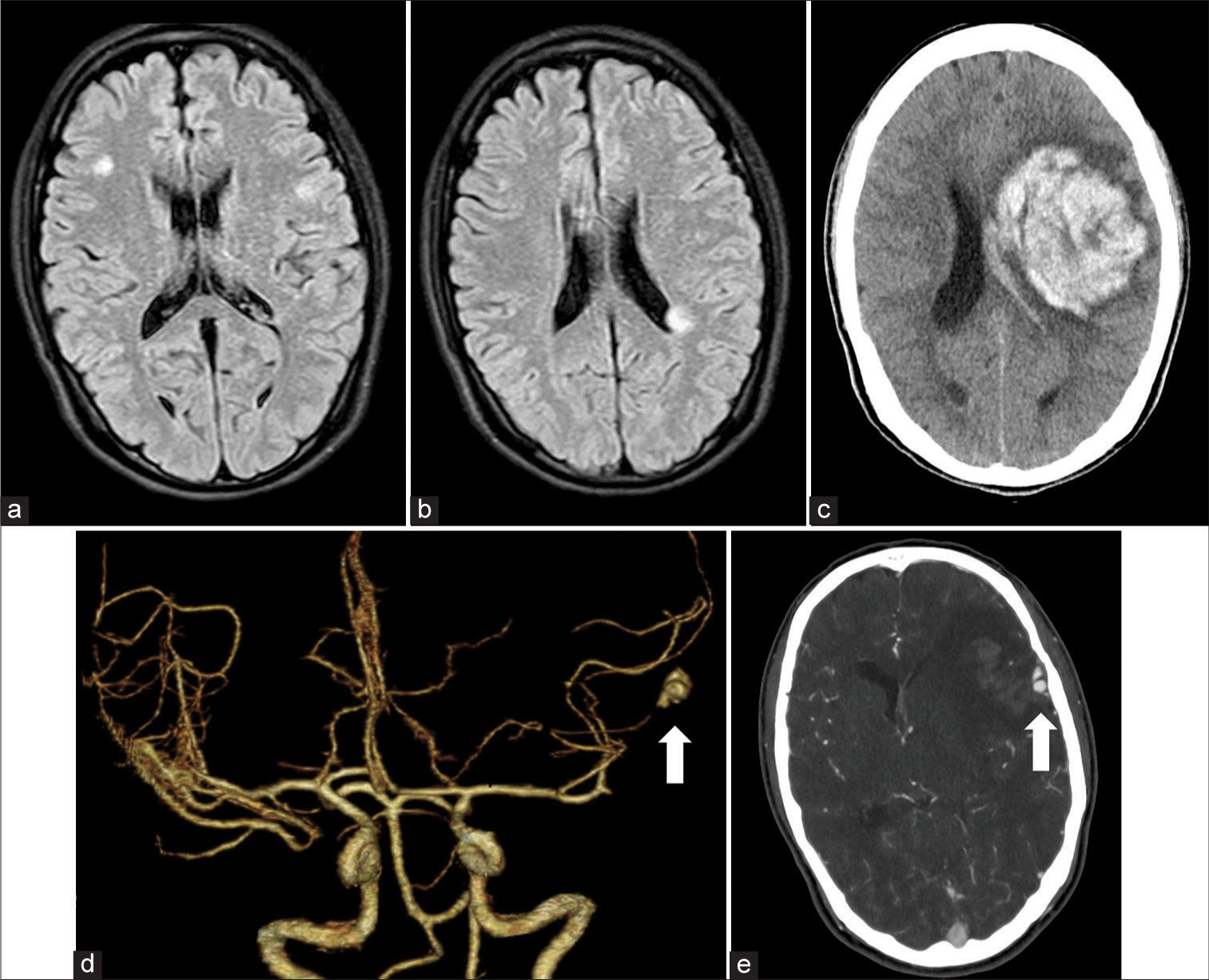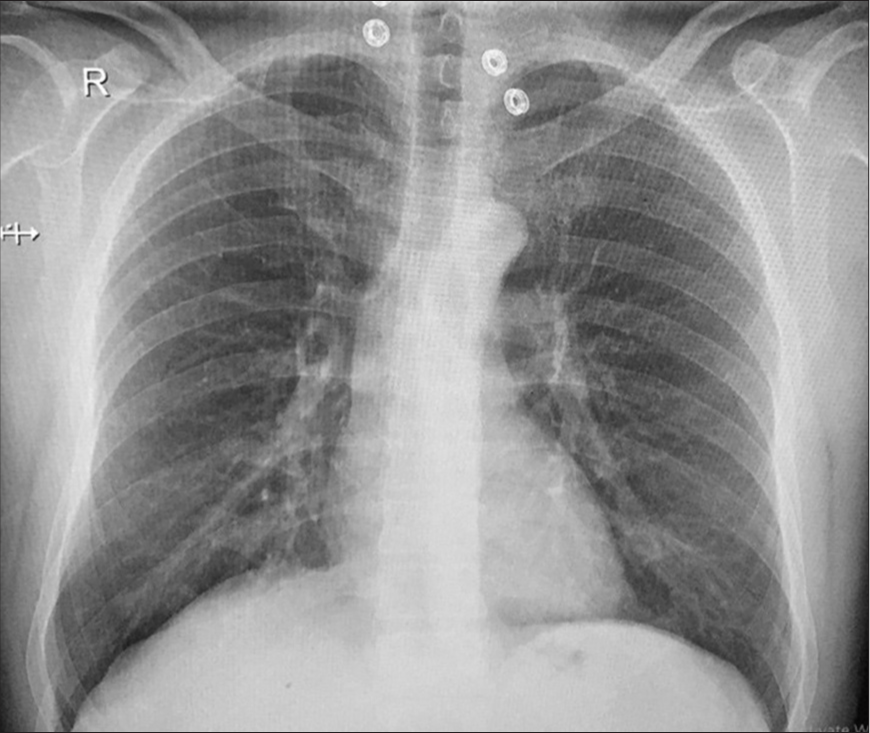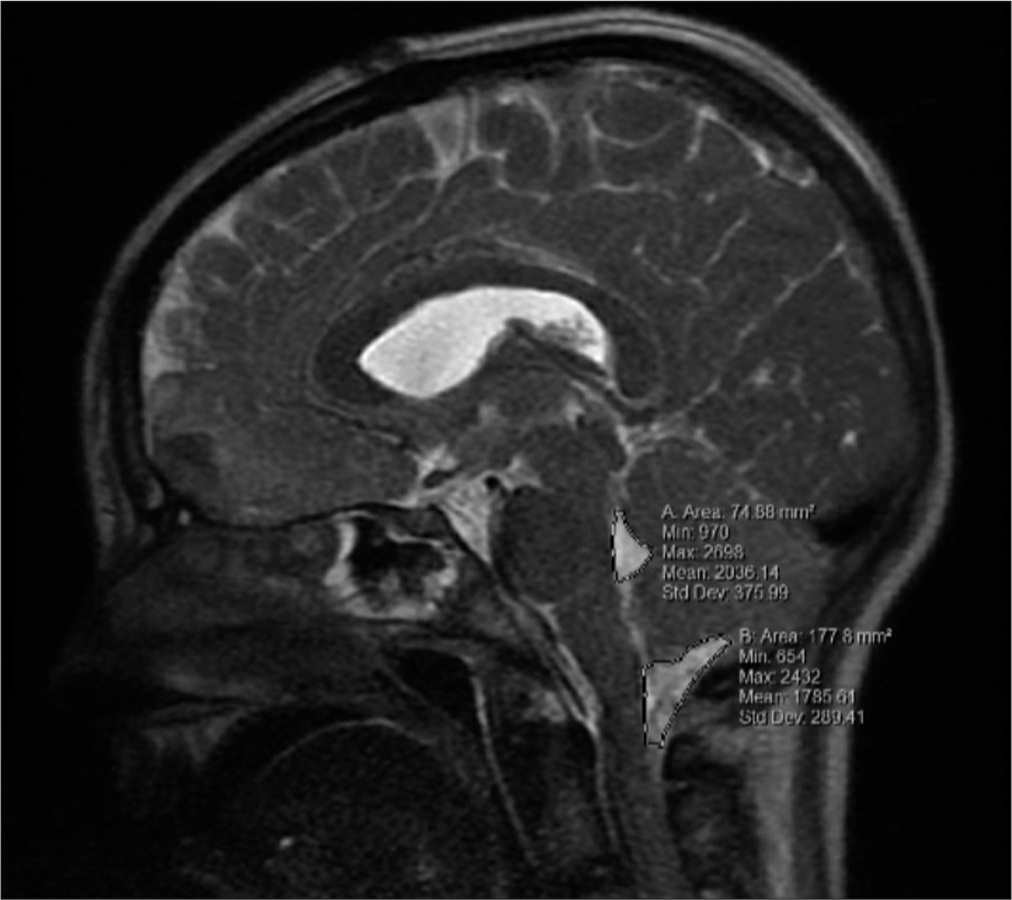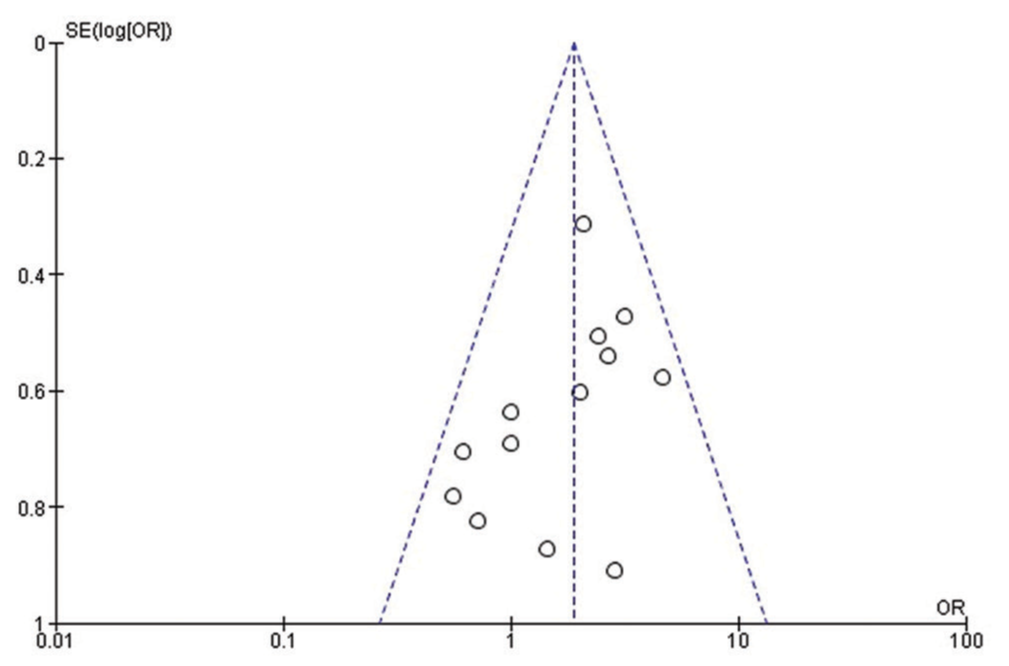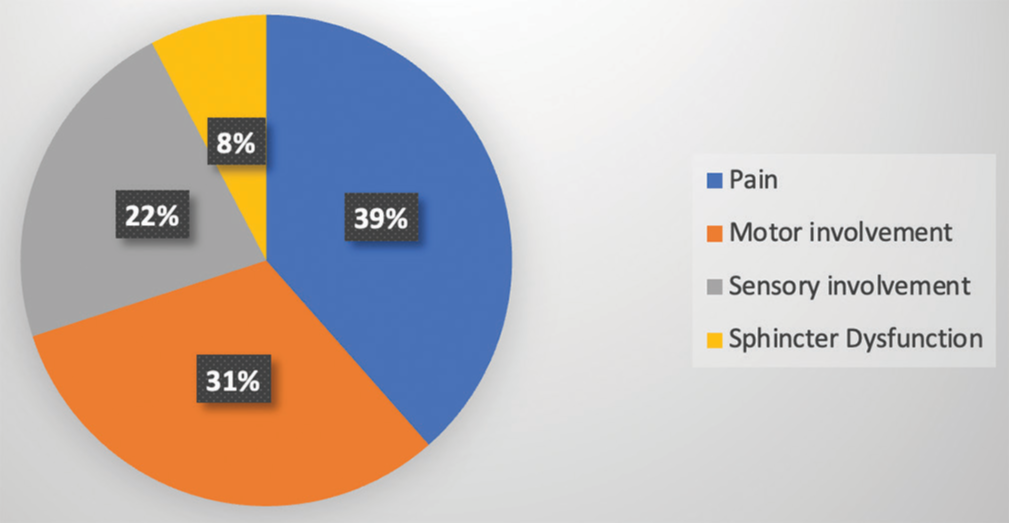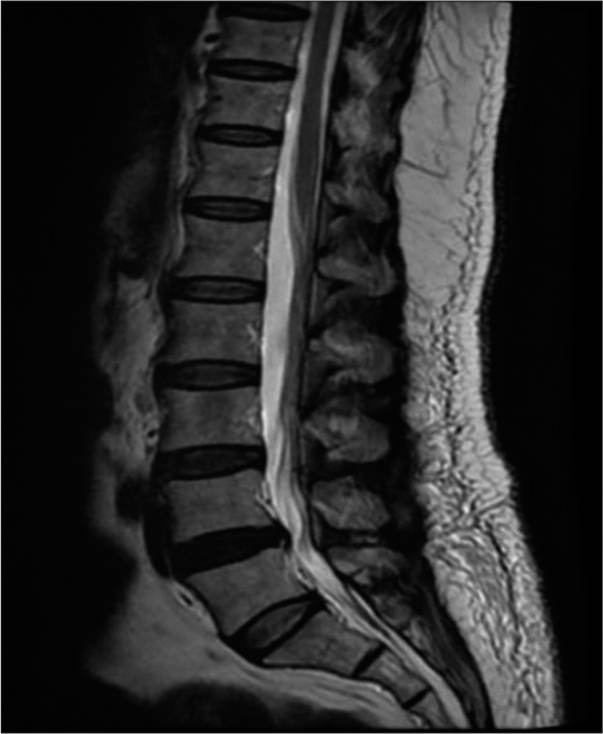Adequate control of seizures in a case of lead migration and neuromodulation of the posterior Sylvian junction: A case report
Date of publication: 05-Apr-2024
Background: This report aims to describe the neuromodulation effect on seizure control in a patient with a left hippocampal migrated electrode to the Posterior Sylvian Junction (PSJ) during a follow-up of 17 years.
Surgical treatment of orbital tumors in a single center: Analysis and results
Date of publication: 05-Apr-2024
Background: Orbital tumors, arising within the bony orbit and its contents, present diverse challenges due to their varied origins and complex anatomical context. These tumors, classified as primary, secondary, or metastatic, are further subdivided into intraconal and extraconal based on their relationship with the muscle cone. This classification significantly influences surgical approach and management. This study highlights surgical experiences with orbital tumors, underscoring the importance of tailored surgical approaches based on the lesion’s site and its proximity to the optic nerve.
A case of bilateral vertebral artery dissection treated by bilateral surgical occlusion and low-flow bypass
Date of publication: 05-Apr-2024
Background: Bilateral vertebral artery dissection aneurysm (VADA) is a rare condition that leads to severe stroke. However, the surgical strategy for its treatment is controversial because the pathology is very complicated and varies in each case. Here, we report a case of bilateral VADA that was successfully treated with staged bilateral VADA occlusion and low-flow bypass.
Accurate preoperative diagnosis of a Rathke cleft cyst with the aid of a novel classification for sellar cystic lesions and a diagnostic algorithm decision: Tools for differentiating cystic sellar lesions with a representative case
Date of publication: 05-Apr-2024
Background: Rathke’s cleft cyst (RCC) is a benign lesion in the sellar and suprasellar compartments. Similarly, pituitary adenomas can present with cystic morphology, making it a differential diagnosis when evaluating a patient with a cystic lesion in the sellar region. Surgical goals differ between RCCs and pituitary adenomas as the first can achieve remission of symptoms with cyst decompression in contrast to pituitary adenomas where complete resection would be the main goal. Imaging analysis alone may not be sufficient to define a preoperative surgical plan. The combination of imaging and conjoined use of validated tools may provide valuable insights to the clinician when defining a surgical approach.
Intracranial mycotic aneurysm rupture following cupping therapy
Date of publication: 05-Apr-2024
Background: Cupping therapy is an alternative treatment that uses a small glass cup to suck the skin with a needle and has been used to manage skin problems and pain. However, serious complications have been reported. Herein, we describe a case of intracranial mycotic aneurysm rupture after cupping therapy.
Tuberculoma mimicking en-plaque meningioma in a 45-year-old male: A case report
Date of publication: 05-Apr-2024
Background: Tuberculoma mimicking en-plaque meningioma is a rare variant of tuberculoma. A few cases were reported in the literature. The radiological appearance can be mistakenly diagnosed as en-plaque meningioma.
Prognostic and morphological factors in pediatric cerebellar contusions
Date of publication: 05-Apr-2024
Background: Although uncommon, cerebellar contusions are associated with significant morbidity and mortality. Literature is lacking in the prognostic and morphological factors relating to their clinical picture and outcomes, especially within children. The objective of this study is to evaluate prognostic and anatomic factors in the clinical picture of cerebellar contusions, including effacement of the 4th ventricle and cisterna magna.
Comparing equiosmolar hypertonic saline and mannitol for achieving brain relaxation in elective craniotomy patients: A systematic review and meta-analysis
Date of publication: 05-Apr-2024
Background: This study strives to provide a current and thorough assessment of the comparative efficacy and safety between equiosmolar quantities of hypertonic saline (HS) and mannitol in facilitating brain relaxation for patients undergoing elective craniotomies.
Functional outcomes in intradural extramedullary spinal tumors
Date of publication: 05-Apr-2024
Background: Intradural extramedullary (IDEM) spinal cord tumors account for approximately two-thirds of benign intraspinal neoplasms. These are amenable to gross total excision but can have variable functional outcomes, which plays a key role in assessing their impact on a patient’s quality of life. Understanding the functional outcomes associated with these tumors is crucial for healthcare professionals to devise appropriate treatment plans and provide comprehensive care.
Aortoiliac occlusion mimicking cauda equina syndrome, a diagnostic dilemma: A case report and review of the literature
Date of publication: 29-Mar-2024
Background: Cauda equina syndrome (CES) is a consequence of a variety of etiologies. CES is most commonly due to compression of the thecal sac and nerve roots by a massive disc herniation. However, it rarely presents secondary to aortic occlusion. Aortoiliac occlusive disorder is usually associated with chronic claudication, erectile dysfunction, and diminished lower limb pulses. Acute aortic occlusion, however, is associated with serious complications such as spinal cord infarction and ischemia. It is also associated with a high risk of morbidity and mortality. Moreover, it poses a diagnostic challenge and may be overlooked. This report emphasizes the importance of considering vascular etiology as a differential diagnosis for CES.





